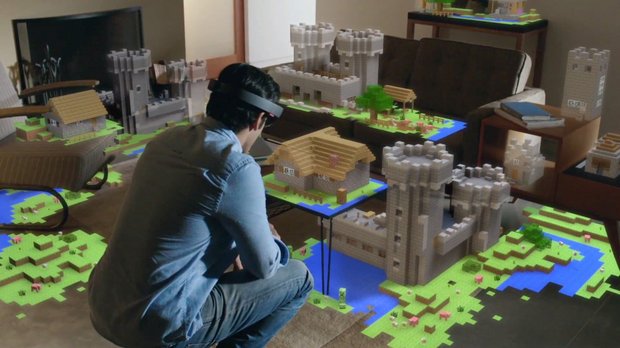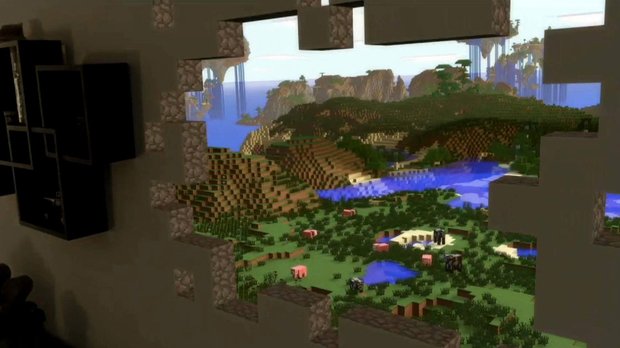What HoloLens means for Minecraft
In a laboratory buried deep inside Microsoft’s headquarters in Washington, a team of researchers has been working for more than five years on something incredible - a head-mounted holographic computer. It’s called HoloLens, and it’s going to have a massive impact on the future of Minecraft.
HoloLens was a somewhat surprise announcement at the tail end of a long, dull press conference about Windows 10 in January 2015. It blends together the real world with the virtual by projecting images on top of what you see – allowing the morning’s headlines to float above your breakfast cereal, for example, or a weather report on your kitchen wall. It’s the creation of Alex Kipman, who was the genius brain behind Xbox 360’s motion-sensing Kinect accessory.

Following the announcement, Microsoft took a group of journalists down into the labs where HoloLens is being developed and allowed them to give it a try for themselves. They came back with stories of floating Skype windows, trips to Mars, and – most interestingly – a Minecraft castle perched on a real-life coffee table.
Since Microsoft acquired Mojang in late 2014 for a whopping $2.5 billion, players have been wondering what the buyout would mean for their favourite pastime. The answer is as clear as the HoloLens on your head. In the demo, the castle had a zombie infestation. After walking around the sides of the table to view the situation from all angles, you could see that the zombies were clustered around a block of TNT. With a single tap, it detonated and the zombs fell to a fiery death in a lava pit below. Toasty! Then, more TNT appeared in a picture frame on the actual wall of the room. A tap of that blew a huge hole in the wall, revealing a large cavern populated by bats. Journalists reported the experience was convincing and almost lag-free.

That’s thanks to a first-of-its-kind ‘holographic processing unit’. It sounds like something from Star Trek, but it works by pulling information in from many different sensors to map virtually-generated data onto the real world and process gestures and voice commands. It’s paired with a traditional CPU and graphics chip, meaning that you won’t have to plug the HoloLens into a laptop, phone or tablet to use it – it exists all on its own. Sound is spatially-placed, so holograms can sound like they’re behind you – perfect for hearing those sneaky creepers – and NASA has already said that it plans to start using the technology to control its Curiosity Mars rover. The implications for Minecraft are amazing (as well as for loads of other great games).
Microsoft has already said that it has no plans to rush out Minecraft 2, but Mojang has long been interested in new platforms – from mobile phones to the Oculus Rift. There’s plenty of time to get things right. Microsoft has said HoloLens will be released ‘in the Windows 10 timeframe’, meaning the next five years or so.

We wouldn’t bet against a version of Minecraft being bundled with the first versions of HoloLens that go on sale. Why? Well, it’s clear that Microsoft wants to use Minecraft to help people understand and get comfortable in a future world where virtual images are meshed seamlessly into real life. It’s the killer app for HoloLens – making real the promise of infinite virtual Lego in a way that’s not just user-friendly, but also proven to be genuinely fun. For Microsoft to get back out of the shadow of Google and Apple it needs to pull something very special out of the bag. HoloLens, with Minecraft’s help, could be just that thing.
Weekly digests, tales from the communities you love, and more
Click here for more excellent GamesMaster articles. Or maybe you want to take advantage of some great offers on magazine subscriptions? You can find them here.



